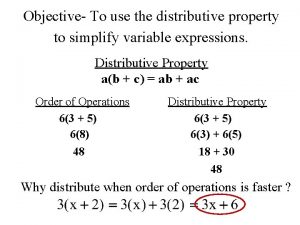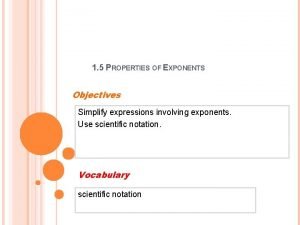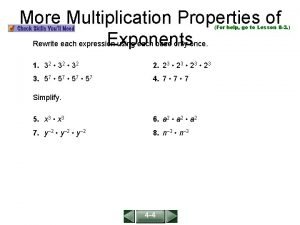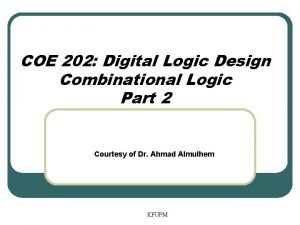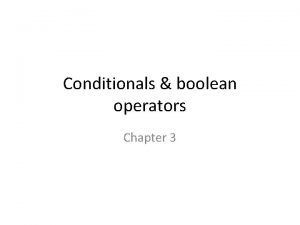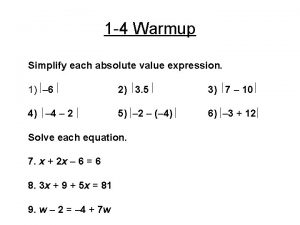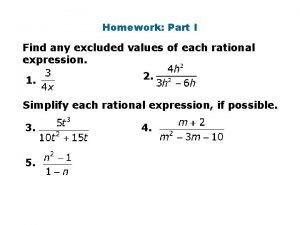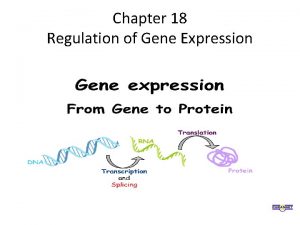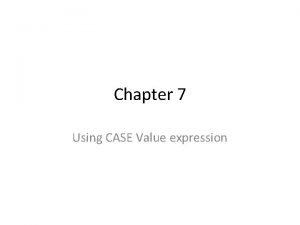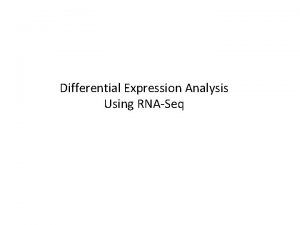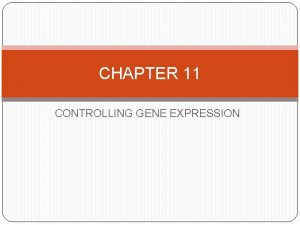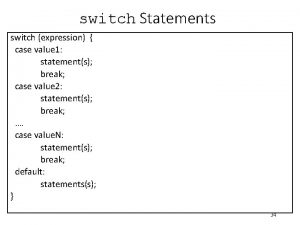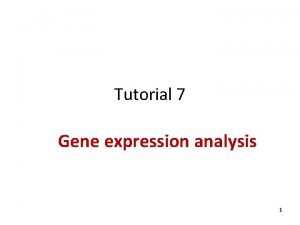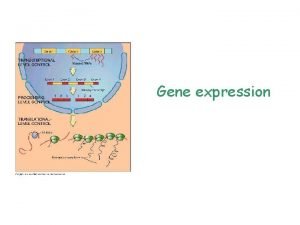Chapter 7 Using CASE Value expression CASE Value





















![Create table space • CREATE TABLESPACE tablespace_name file_name [SIZE integer M] [REUSE] DEFAULT STORAGE Create table space • CREATE TABLESPACE tablespace_name file_name [SIZE integer M] [REUSE] DEFAULT STORAGE](https://slidetodoc.com/presentation_image_h2/7ca4ffca0a92a4be747231f28cef0c69/image-22.jpg)


![Create Table • SQL Statement: CREATE TABLE table_name (column_name data_type [DEFAULT exp] [CONSTRAINT]) TABLESPACE Create Table • SQL Statement: CREATE TABLE table_name (column_name data_type [DEFAULT exp] [CONSTRAINT]) TABLESPACE](https://slidetodoc.com/presentation_image_h2/7ca4ffca0a92a4be747231f28cef0c69/image-25.jpg)


- Slides: 27

Chapter 7 Using CASE Value expression

CASE Value expression • A CASE value expression allows you to set up a series of conditions that modify specified values returned by your SQL statement • You can change the way a value is represented or calculate a new value • Each value is modified according to the condition specified within the CASE expression

CASE Value expression Syntax • Using CASE with select statement SELECT column name 1, …, CASE [ expression] WHEN condition 1 THEN result 1 WHEN condition 2 THEN result 2. . [ELSE result] END [as expression] FROM table name;

Example 1 • Represent the names for all employees and determine if its salary is low, high or medium according to the following table Salary Level < 3000 Low Between 3000 and 7000 Medium Ø 7000 high

Example 2 • SELECT first_name, Last_name, CASE WHEN salary < 3000 THEN 'Low' WHEN salary BETWEEN 3000 AND 7000 THEN 'Medium' WHEN salary > 7000 THEN 'High' ELSE 'N/A‘ END as “salary Level” FROM employees;

Example 2 SELECT last_name, employee_id, CASE department_id WHEN 10 THEN 'Accounting' WHEN 20 THEN 'Research' WHEN 30 THEN 'Sales' WHEN 40 THEN 'Operations' ELSE 'Unknown' END as "department name" FROM employees ORDER BY last_name;

Using CASE with UPDATE statements • Another handy use for the CASE value expression is in the SET clause of an UPDATE statement. For example, suppose you want to increase the salary for employees based on their job id

Using CASE with UPDATE statements Update employees Set salary = Case job_id When ‘AD_PRES’ then salary+100 When ‘AD_VP’ then salary+200 Else salary End;

Database structure and space Management

Database Structure • An ORACLE database has both a physical and logical structure. By separating physical and logical database structure, the physical storage of data can be managed without affecting the access to logical storage structures.

Database structures Logical Physical

Logical Database Structure 1. 2. 3. 4. Tablespace - stores related database objects Segments - stores an individual database object, such as a table or an index Extent - a contiguous unit of storage space within a segment Data Block - smallest storage unit that the database can address. Extents consist of data blocks

Logical Database Structure Tablespace Segments Extents Data blocks Extents

Table space • Each Database is logically divided into one or more table spaces • Table space can be online (accessible) {default} or offline (Not accessible) • You can create a new tablespace to increase the size of a database • The database Administrator can bring any tablespace in an oracle online or offline

Database, Tablespaces, and data files • Oracle stores data logically in tablespaces and physically in datafiles associated with the corresponding tablespace.


Database, Tablespaces, and data files • The relationship among databases, tablespaces, and data files : 1. Each database is logically divided into one or more tablespaces. 2. One or more data files are explicitly created for each tablespace to physically store the data of all logical structures in a tablespace. 3. The combined size of a tablespace's data files in the total storage capacity of the tablespace. 4. The combined storage capacity of a database's tablespaces is the total storage capacity of the database

Allocate More Space for a Database • The size of a tablespace is the size of the datafiles that constitute the tablespace. The size of a database is the collective size of the tablespaces that constitute the database. • You can enlarge a database in three ways: – – Add a datafile to a tablespace Add a new tablespace Increase the size of a datafile When you add another datafile to an existing tablespace, you increase the amount of disk space allocated for the corresponding tablespace



![Create table space CREATE TABLESPACE tablespacename filename SIZE integer M REUSE DEFAULT STORAGE Create table space • CREATE TABLESPACE tablespace_name file_name [SIZE integer M] [REUSE] DEFAULT STORAGE](https://slidetodoc.com/presentation_image_h2/7ca4ffca0a92a4be747231f28cef0c69/image-22.jpg)
Create table space • CREATE TABLESPACE tablespace_name file_name [SIZE integer M] [REUSE] DEFAULT STORAGE ( INITIAL integer M NEXT integer M MINEXTENTS integer MAXEXTENTS integer PCTINCREASE integer) ONLINE or OFFLINE PERMANENT or TEMPORARY; DATAFILE

Create table space • TABLESPACE : Tablespace in which you want the table to reside. • INITIAL SIZE: The size for the initial extent of the table. • NEXT SIZE: The value for any additional extents the table may take through growth. • MINEXTENTS and MAXEXTENTS: Identify the minimum and maximum extents allowed for the table. • PCTINCREASE: Identifies the percentage the next extent will be increased each time the table grows, or takes another extent.

Example • CREATE TABLESPACE tp DATAFILE 'df. ora' SIZE 10 M DEFAULT STORAGE( INITIAL 10 K NEXT 50 K MINEXTENTS 1 MAXEXTENTS 999 PCTINCREASE 10) ONLINE permanent;
![Create Table SQL Statement CREATE TABLE tablename columnname datatype DEFAULT exp CONSTRAINT TABLESPACE Create Table • SQL Statement: CREATE TABLE table_name (column_name data_type [DEFAULT exp] [CONSTRAINT]) TABLESPACE](https://slidetodoc.com/presentation_image_h2/7ca4ffca0a92a4be747231f28cef0c69/image-25.jpg)
Create Table • SQL Statement: CREATE TABLE table_name (column_name data_type [DEFAULT exp] [CONSTRAINT]) TABLESPACE tablespace_name STORAGE (INITIAL size K or M NEXT size K or M MINEXTENTS value MAXEXTENTS value PCTINCREASE value);

Example • CREATE TABLE maha ( id NUMBER CONSTRAINT co_id PRIMARY KEY, name varchar(20)) TABLESPACE tp STORAGE ( INITIAL 7000 NEXT 7000 MINEXTENTS 1 MAXEXTENTS 5 PCTINCREASE 5);

Table space • Most major RDBMSs have default settings for table sizes and table locations. • If you do not specify table size and location, then the table will take the defaults. • The defaults may be very undesirable, especially for large tables.
 Linear term
Linear term Best worst and average case
Best worst and average case Contoh value creation adalah
Contoh value creation adalah Simplify expressions
Simplify expressions Factor the expression using the gcf. $4m+32$
Factor the expression using the gcf. $4m+32$ 1 5 as a decimal
1 5 as a decimal 7-3 more multiplication properties of exponents
7-3 more multiplication properties of exponents Factor the simplified expression using the gcf.
Factor the simplified expression using the gcf. K map
K map Boolean expression
Boolean expression Pos expression can be implemented using
Pos expression can be implemented using Dialog greeting and leave taking
Dialog greeting and leave taking Purposeful expression of feelings in social case work
Purposeful expression of feelings in social case work It reverses the value of a boolean expression
It reverses the value of a boolean expression Simplify this equation
Simplify this equation 7-4 properties of logarithms
7-4 properties of logarithms Excluded value
Excluded value Using system using system.collections.generic
Using system using system.collections.generic Defrost using internal heat is accomplished using
Defrost using internal heat is accomplished using Chapter 18 regulation of gene expression
Chapter 18 regulation of gene expression Chapter 18 regulation of gene expression
Chapter 18 regulation of gene expression Chapter 18 regulation of gene expression
Chapter 18 regulation of gene expression Chapter 18
Chapter 18 Fashion means self expression
Fashion means self expression Protein power point
Protein power point Using line to create value
Using line to create value Enterprise value using ebitda multiple
Enterprise value using ebitda multiple Long case vs short case
Long case vs short case



